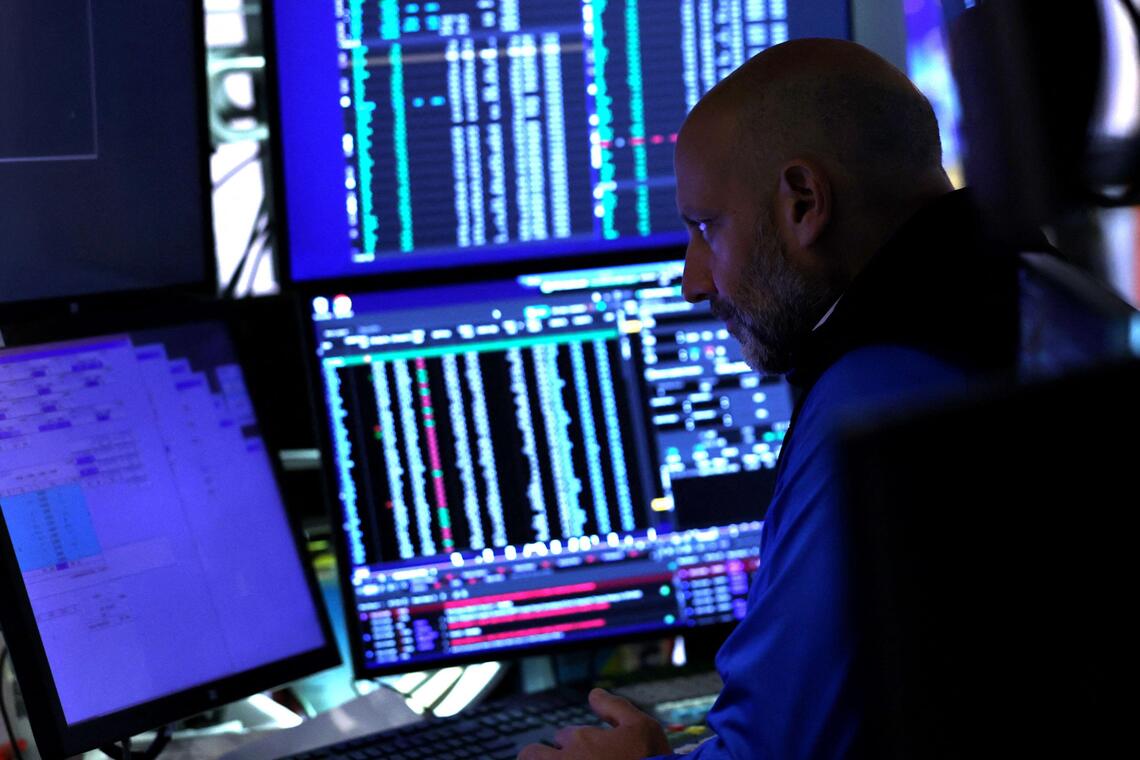NEW YORK – A lot of things got worse in September. The government shut down, US job prospects dimmed and debates around central bank autonomy grew deafening.
And yet in commodities, stocks and foreign exchange markets, the month will go down as a time when a simple bet that winning trades continue to win saw its best stretch in three years.
Gold surged 12 per cent, extending its upward march for the eighth time in nine months, while the Japanese yen slid further against the US dollar. Stocks from New York to Seoul built on a months-long advance that has now added around US$35 trillion (S$45.1 trillion) to share values worldwide.
Across assets and time zones, investors chased momentum practically everywhere, just months after many of the trades initially collapsed at the start of US President Donald Trump’s tariff wars.
The trend is so strong in equities that it is starting to defy the efforts of money managers to keep up. Data from Jefferies Financial Group shows that the proportion of long-only actively managed funds beating benchmarks has fallen to 22 per cent in 2025, poised for the worst showing on record.
While fear of missing out is an ever-present anxiety that often spurs this kind of behaviour and may fuel further gains, other pillars of risk-taking have done their part to offset political and economic stress.
JPMorgan Chase strategists said in a note that liquidity in the economy – the supply of money sloshing around bank accounts and money market funds, among other things – has been steadily expanding for two years and become a major tailwind for asset prices. Add in a dovish Federal Reserve, and it is a backdrop for buoyancy across assets.
“Despite some of the negative headlines and risks, clearly investors don’t want to be caught off guard and don’t want to miss that rally,” said Mr Joseph Tanious, chief investment strategist at Northern Trust Asset Management.
“There were things that were really weighing on investors and on markets just a few months ago. Today, we have more clarity,” he added.
While active managers are struggling, investment vehicles built to harvest market momentum are surging. An index of commodity-trading advisers that surf price trends across assets jumped almost 6 per cent in September, while a similar trend-following fund, the iMGP DBi Managed Futures Strategy ETF, had its best month since 2022.
The stellar performance marks a turnaround from earlier in the year, when fast-shifting narratives dealt a blow to the macro set as Mr Trump’s chaotic policymaking forced investors to price in wide-ranging scenarios from resurgent inflation to outright recession.
Now, the consensus has reversed. As unpredictable as Mr Trump has been, his willingness to walk back the more draconian aspects of the trade war has bred confidence in markets that is approaching unshakable. And with the Fed shifting its policy priority to a weakening labour market over inflation, the safety net has broadened.
“There is lots of confidence in the Fed put,” said Mr Brad Conger, chief investment officer at Hirtle Callaghan. “Everything is viewed in the best possible light.”
Market resilience was on display again last week as investors brushed aside the US government shutdown and delayed economic data releases, including a widely watched monthly report on employment. The S&P 500 rose 1 per cent after finishing September up 3.5 per cent. The dollar hewed to its broader downtrend and gold rallied for a seventh week.
While an expanding economy and rising earnings are bolstering risky assets, the availability of money in the financial system has also helped, according to an analysis by JPMorgan strategists.
Various Treasury actions have caused measures of money supply to rise faster than gross domestic product, they wrote in a note this week, and the funds have found their way into equities and credit. The dynamic is likely to remain a support for markets, the team predicts.
Another type of liquidity, inflows to money managers, is also at work in the run-up – and it is not limited to stocks. From fixed income to commodities, virtually every category of exchange-traded funds (ETFs) has enjoyed fresh cash injections in recent weeks. At US$141 billion, September’s total deposit to US-focused ETFs ranked as the third-highest on record, according to Citigroup.
“What caught our attention was just how broad the flows were across and within asset classes,” said Mr Scott Chronert, Citi’s chief US equity strategist. “We have to acknowledge that there seems to be a lot of liquidity out there that is still looking to get put to work.”
The iShares MSCI USA Momentum Factor ETF has attracted roughly US$2.8 billion so far in 2025, putting it on pace for its best year of inflows since 2018. The fund, which gained 5 per cent in September, is up some 23 per cent this year. Meanwhile, a Goldman Sachs basket of high-beta momentum names surged 17 per cent in September.
For active fund managers who pick stocks based on fundamentals such as profit growth or valuations, the velocity of the moves has created problems. The ratio of market-beating funds is on pace for the lowest reading since at least 1999.
While the reason for underperformance varies from fund to fund, one common culprit for the large-cap core category is the aversion to technology shares, according to Mr Steven DeSanctis, a strategist at Jefferies. Thanks to persistent optimism over artificial intelligence, tech is the best-performing industry in the S&P 500 in 2025.
Lagging returns may create pressure for fund pros to catch up in the final months of 2025.
“Right now, the market is communicating that it’s not a fearful time,” said Mr Ben Fulton, chief executive of WEBs Investments, an ETF provider that specialises in volatility-managed investment solutions. “You need to stay invested.” BLOOMBERG
